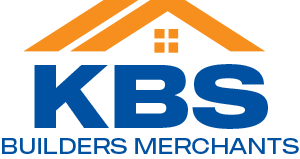- KBS Builders Merchants, 657 Woolwich Rd, London SE7 8LH
- Talk To An Expert :020 8150 5155
9 Pros and Cons of Various Building Materials: Choose Wisely

Introduction
The choice of building materials is a pivotal decision in the construction process, significantly influencing a project's sustainability, durability, and aesthetic appeal. KBS Builders Merchants, a leading building material supplier and builders merchant, emphasises the necessity of making informed decisions regarding material selection. This detailed overview examines the pros and cons of various building materials, aiding in selecting the most suitable options for diverse construction needs.
1: Wood
- Pros: Wood's natural beauty brings warmth and character to constructions, making it highly valued for its aesthetic appeal. It is also renewable, especially when sourced sustainably and offers excellent thermal insulation properties, contributing to energy-efficient buildings.
- Cons: Wood's susceptibility to pests like termites and damage from moisture can compromise its structural integrity. It requires regular maintenance to retain its appearance and durability, and its fire resistance varies, necessitating additional treatments for safety.
2: Concrete
- Pros: Concrete stands out for its unmatched durability and fire resistance, making it ideal for robust constructions. It requires minimal maintenance and offers versatility in structural and decorative applications, accommodating diverse architectural styles.
- Cons: Despite its strengths, concrete's production process has a significant carbon footprint, contributing to environmental concerns. It may crack over time due to settlement or thermal expansion, and its stark, industrial appearance may not suit all tastes.
3: Steel
- Pros: Steel's high strength-to-weight ratio allows for innovative architectural designs, supported by its durability and recyclability. Prefabrication processes can significantly speed up construction times, making steel a practical choice for modern projects.
- Cons: Without protective coatings, steel is prone to corrosion. Its higher initial costs can be a deterrent, and its excellent thermal conductivity, while beneficial in some aspects, can lead to lower energy efficiency unless properly insulated.
4: Brick
- Pros: Bricks offer longevity and require little maintenance over their lifep. They are fire-resistant and possess thermal mass, which helps regulate indoor temperatures, enhancing a building's energy efficiency.
- Cons: The initial investment for brick construction is generally higher due to both material costs and the labor-intensive installation process. The weight of brick necessitates robust foundation support, adding to the overall project cost.
5: Glass
- Pros: Glass maximises natural light, contributing to a building's aesthetic appeal and reducing the need for artificial lighting. It offers design versatility and is recyclable, aligning with sustainable construction practices.
- Cons: Standard glass has poor insulation properties, which can be mitigated through special coatings or double glazing at an additional cost. Its susceptibility to breakage raises safety concerns, and the high cost of advanced glazing options may not be feasible for all budgets.
6: Stone
- Pros: Stone's unparalleled durability and timeless beauty make it a premium choice for construction. It requires minimal maintenance and provides excellent thermal mass, similar to brick.
- Cons: The high cost and significant weight of stone demand substantial structural support and skilled craftsmanship for installation, potentially limiting its application to specific project types or design elements.
7: Bamboo
- Pros: Bamboo is celebrated for its sustainability as a rapidly renewable resource. It offers considerable tensile strength, a
unique aesthetic appeal, and is lightweight and versatile.
- Cons: Without proper treatment, bamboo is vulnerable to moisture absorption and insect attacks. Limited availability in certain regions and variability in quality may pose challenges to widespread adoption.
8: Earth
- Pros: Earth-based materials such as rammed earth and adobe have a minimal environmental impact and provide excellent thermal mass, contributing to energy-efficient buildings. These materials are cost-effective in regions where they are readily available.
- Cons: Construction with earth materials requires specialis
ed skills and knowledge. If not adequately protected or designed, these structures can be susceptible to water damage, and
regional climate conditions may restrict their suitability.
9: Choosing the Right Material for Your Project
- When selecting building materials, consider factors such as the local climate, project budget, desired aesthetic, structural requirements, and sustainability goals. Balancing the pros and cons of each material in relation to your specific project needs is crucial for achieving a successful and satisfying outcome.
Conclusion
Thoughtful selection of building materials is essential for the success of any construction project. By understanding the unique properties, advantages, and limitations of various materials, builders and architects can make choices that not only meet immediate project requirements but also contribute to the long-term sustainability and resilience of their constructions. KBS Builders Merchants encourages professionals and homeowners alike to consider the environmental impact and long-term implications of their building material choices, aiming for a balance between functionality, aesthetics, and ecological responsibility.

